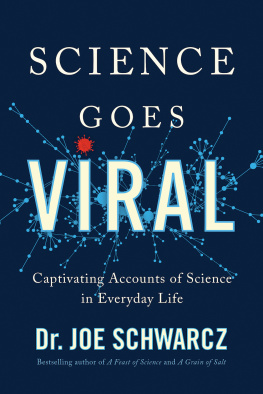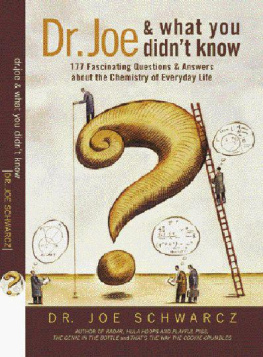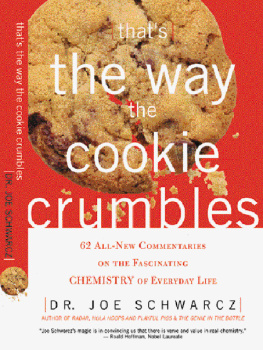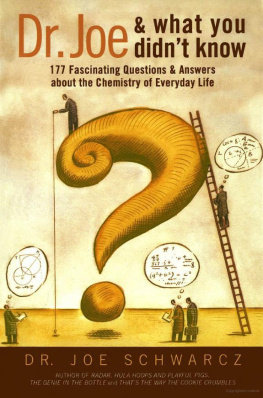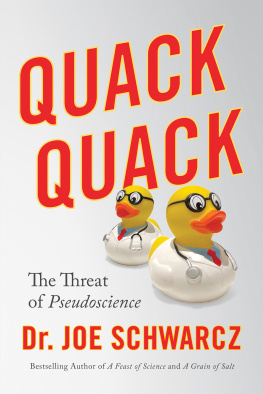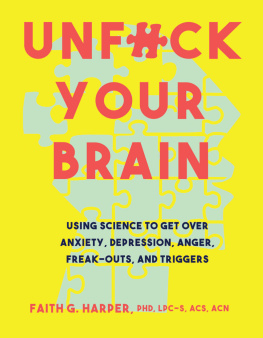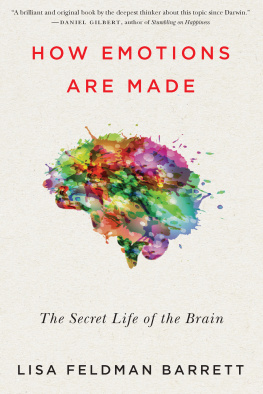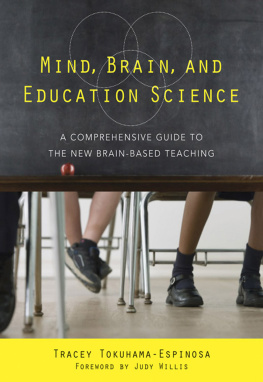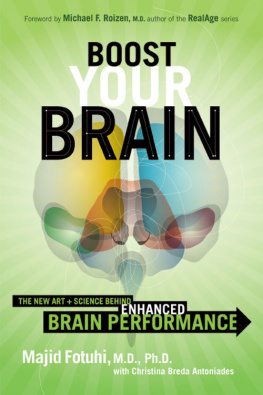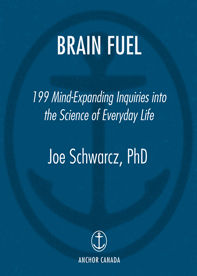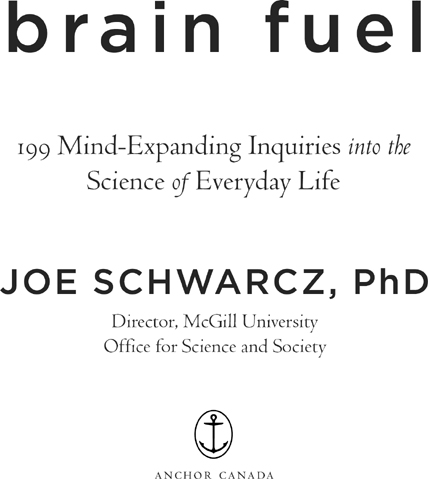introduction
W e humans are a hungry lot. Like all other animals, we of course hunger for food. Unlike our fellow creatures, though, we hunger for something else as well. We hunger for knowledge. Some of this is for practical reasons. We want to know what to eat, what medications to take, what toxic substances to avoid and what to do about climate change. But we also hunger for knowledge just for its own sake. We are innately curious about our history, about the possibility of extraterrestrial life, about why a rose smells like a rose and about why we are curious about so many things. Our brains, like our bodies, constantly need fuel. This book aims to help satisfy that hunger.
This book aims to challenge, too. But, most assuredly, it is not a book of science trivia. Far from it. Each entry serves a purpose. Some offer serious scientific discussions relevant to daily life; others are designed to provoke a Gee, I didnt know that! reaction. If you are looking for practical consumer information, its here as well. If you are searching for curious anecdotes to spice up a conversation, youll find plenty. And if all you want is some personal edification, just keep the book by your bedside, thumb through a few questions every night, and youll be smarter in the morning! Brain Fuel is nutrition for the brain. Digest the whole book and youll have a pretty good feel for what the pursuit of science is all about.
I also admit to another motive. To me, the pursuit of science is wondrous and satisfying. I of course realize that not everyone shares my passion, and nor does everyone need to, but I do feel that too many are missing out on the benefits that the fulfillment of scientific curiosity can bring to life, and I would like to remedy that. Curiosity, it has been said, is to science what a spark is to a flame. My hope is that at least for some of you, I can kindle that spark into a roaring flame. You will enjoy the internal warmth it provides. I certainly do.
So lets get going. And the best way to get going is to take a look at where we have been. Lets start by going back
potions
from the past
What substance became known as anaesthesia la reine after it was introduced in the nineteenth century?
Chloroform. The reine involved was Queen Victoria, the first monarch to give birth to a child under anaesthesia. Prince Leopold, the Queens eighth child, was born in 1853, after her physician, Dr. John Snow, had administered chloroform by holding a handkerchief saturated with the chemical over her majestys mouth. The results were so satisfactory that the Queen asked for chloroform for her next delivery as well, after which the chemical came to be known in Britain as anaesthesia la reine.
Chloroform was first made by the French chemist Jean-Baptiste Dumas, who reacted acetic acid with chlorine, but its use as an anaesthetic was pioneered by James Simpson, a Scottish physician. On the fourth of November, 1847, Simpson and his friends, aware of the euphoria-inducing effects of substances such as laughing gas (nitrous oxide) and ether, sought a little entertainment by inhaling chloroform. After some initial hilarity, they all passed out. Simpsons reaction, on waking, was that this is far stronger and better than ether. (Ether had been introduced the previous year by William Morton in Boston.) Four days later, Simpson successfully delivered a baby after chloroforming the mother. Within a month he had used chloroform on more than fifty patients, one of whom was so delighted with its effectiveness that she named her newborn daughter Anaesthesia.
The procedure was not without risk, and in 1848 the first death attributed to chloroform was recorded. The death of young Hannah Green was probably caused by improper administration of the anaesthetic. Greens death, along with the Calvinist Church of Scotlands opposition to chloroform, cast a shadow on its use. The Church opposed the use of any anaesthetic in childbirth, reasoning that God had punished all of Eves descendants by ensuring that women would bring forth children in pain. (It seems that Eves decision to tempt Adam with that fruit of the tree of knowledge was not a good one.) Opposition to the use of chloroform, however, evaporated when Queen Victoria agreed to be anaesthetized for the birth of Prince Leopold. Approval by the Queen was as close as you could get to approval by God, and the use of chloroform proliferated. Soon it was even incorporated into various patent medicines such as Chlorodyne and Hamlins Wizard Oil. These cure-alls were not only useless but dangerous. Ingestion of significant amounts of chloroform can cause liver damage.
Today, chloroform is no longer used as an anaesthetic, but since it is a by-product of chlorination we are exposed to small doses in our drinking water. Whether or not this presents a lifetime risk is debatable, but chloroform is readily removed by using a home water filter. Bottled waters do not contain any chloroform because they are not treated with chlorine.

The 1905 Nobel Prize in Chemistry was awarded to Adolf von Baeyer for the synthesis of a compound that eventually proved to be important to blue jean manufacturers and also reduced starvation in India. What was this compound?
Indigowhich Adolf von Baeyer synthesized, and determined the exact molecular structure of, in 1880. He was awarded the Nobel Prize by the Royal Swedish Academy of Sciences in 1905 for his services in the advancement of organic chemistry and the chemical industry, through his work on organic dyes and hydroaromatic compounds. Indigo occurs naturally in the shrubs of the genus Indigofera and was well known since antiquity. It was the dye used to colour all sort of fabric blue, including that used to make the uniforms of British sailors. The shrub was cultivated in India on huge farms and exported to Europe. Baeyers discovery made possible the synthesis of indigo from chemicals readily isolated from coal tar. Levi Strauss used indigo to dye his famous blue jeans. More importantly, the discovery of a process for making synthetic indigo freed up thousands and thousands of acres in India for planting with cereal crops. This fed far more people than the indigo export business ever did.

In 1903 a French chemist dropped a glass flask. It shattered, but the fragments did not fly apart. What had he discovered?
Edouard Benedictuss clumsiness led to the discovery of safety glass. When Benedictus examined the flask he had dropped on the floor, he realized that a film had formed on the inside of the vessel. The flask had contained an alcohol solution of collodion, a plastic made by treating cotton with a mixture of sulphuric and nitric acids. When the solvent evaporated, a film of plastic was left on the inside of the glass. Benedictus thought no more of this until he read a story about a young girl being cut by glass in one of the first automobile accidents. He spent the night trying to make a coating on glass and within a day had produced the first sheet of safety glass, which he named triplex since it consisted of a sandwich of two sheets of glass with a film of cellulose nitrate between them.


